
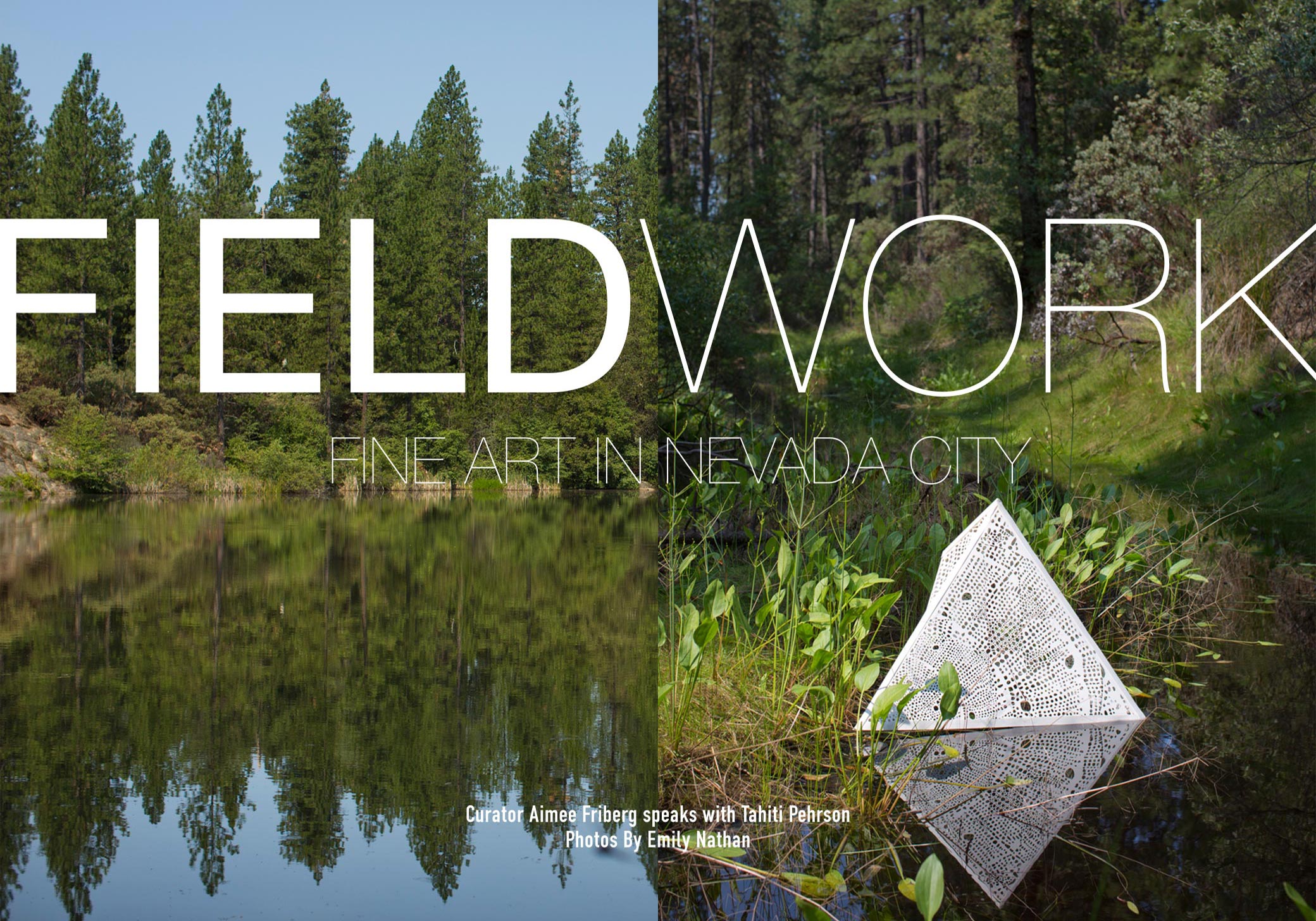
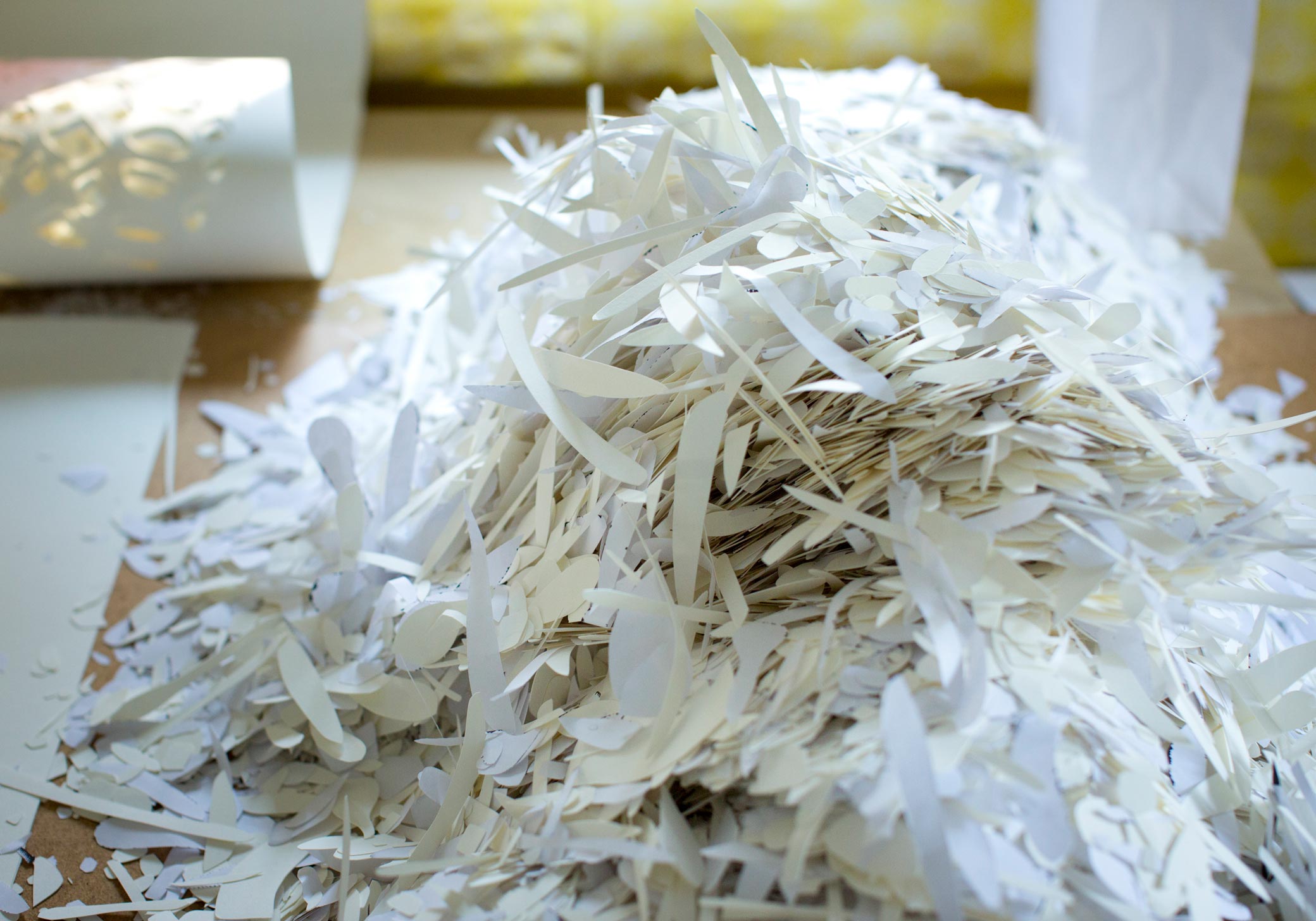
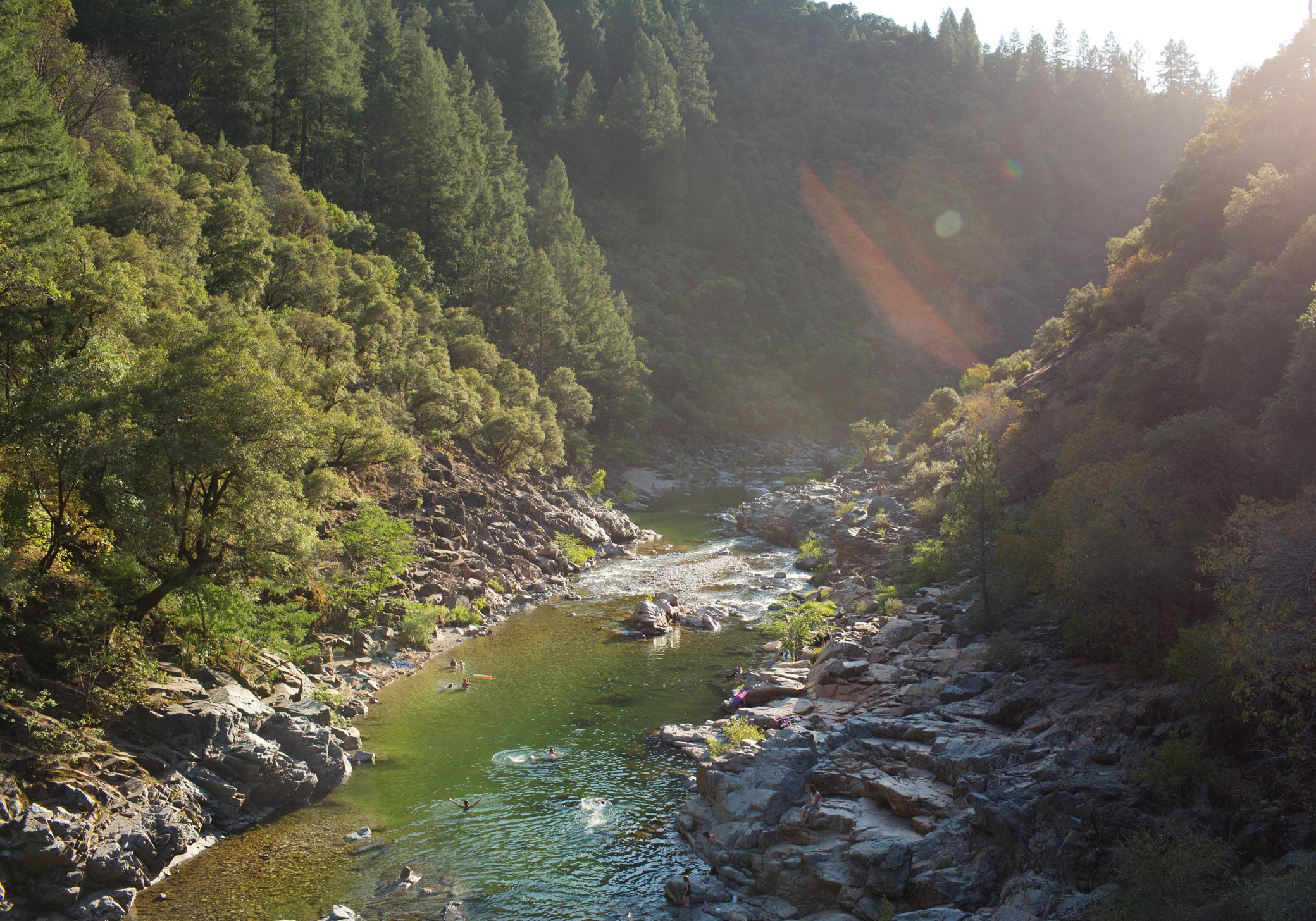
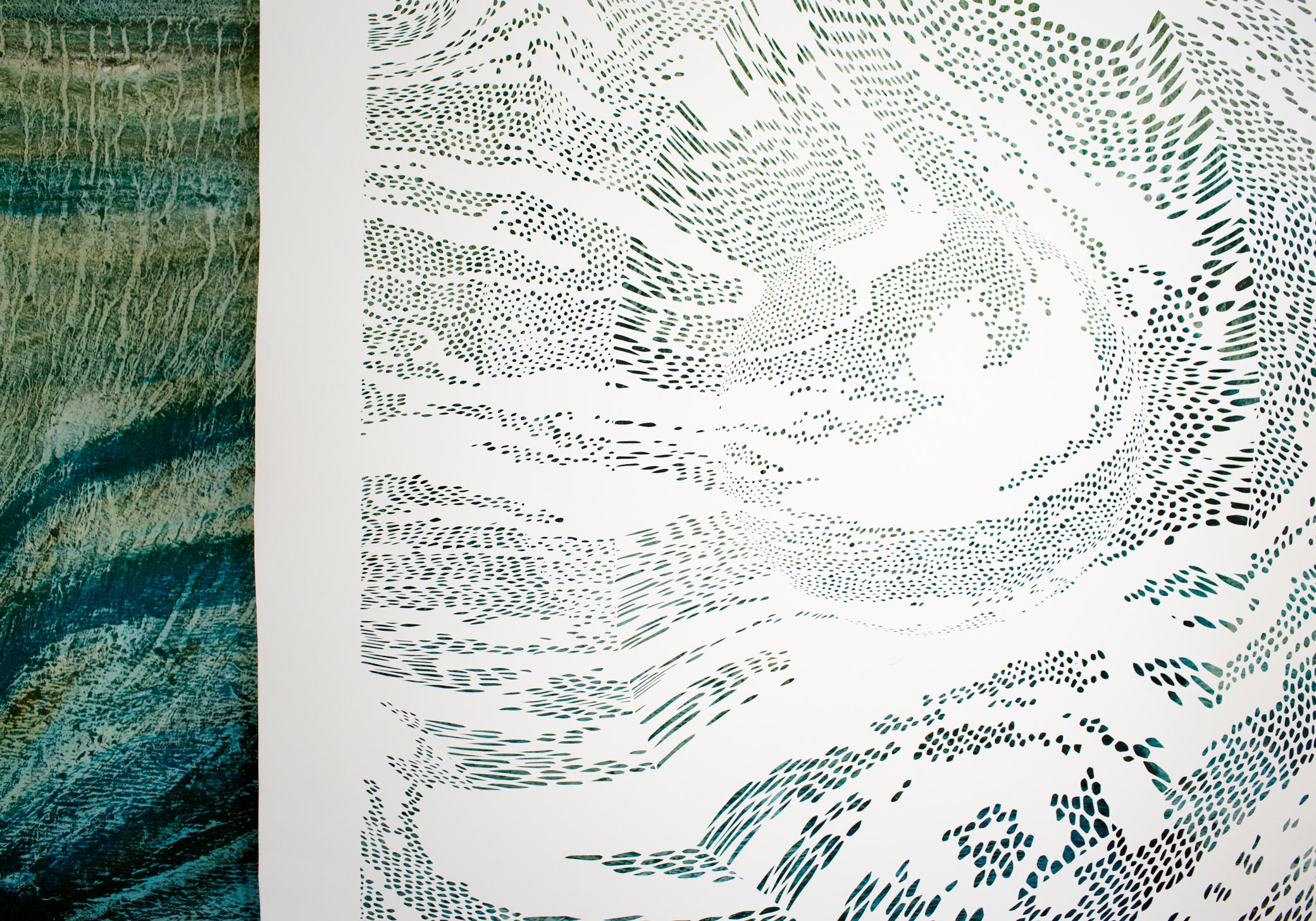
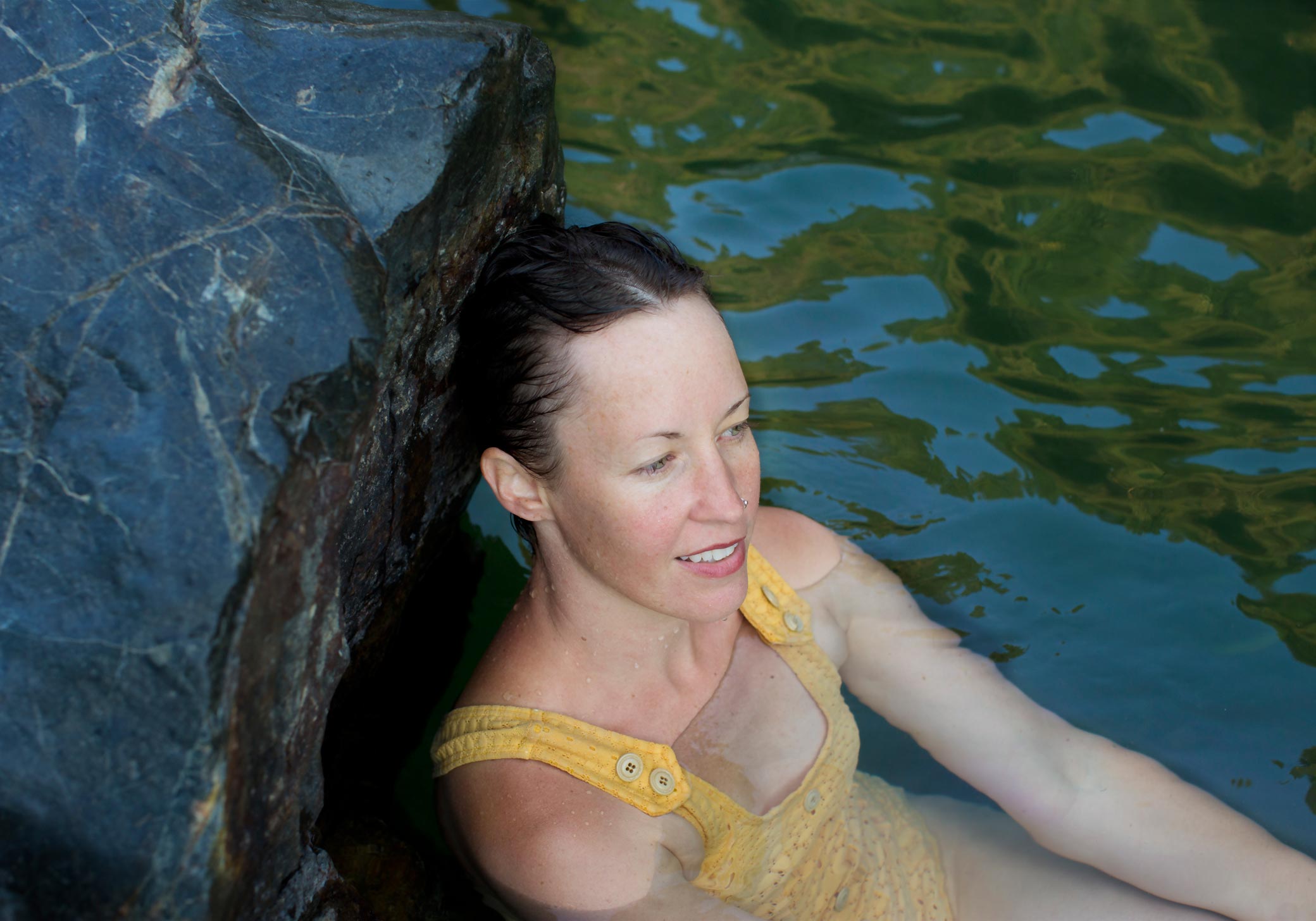
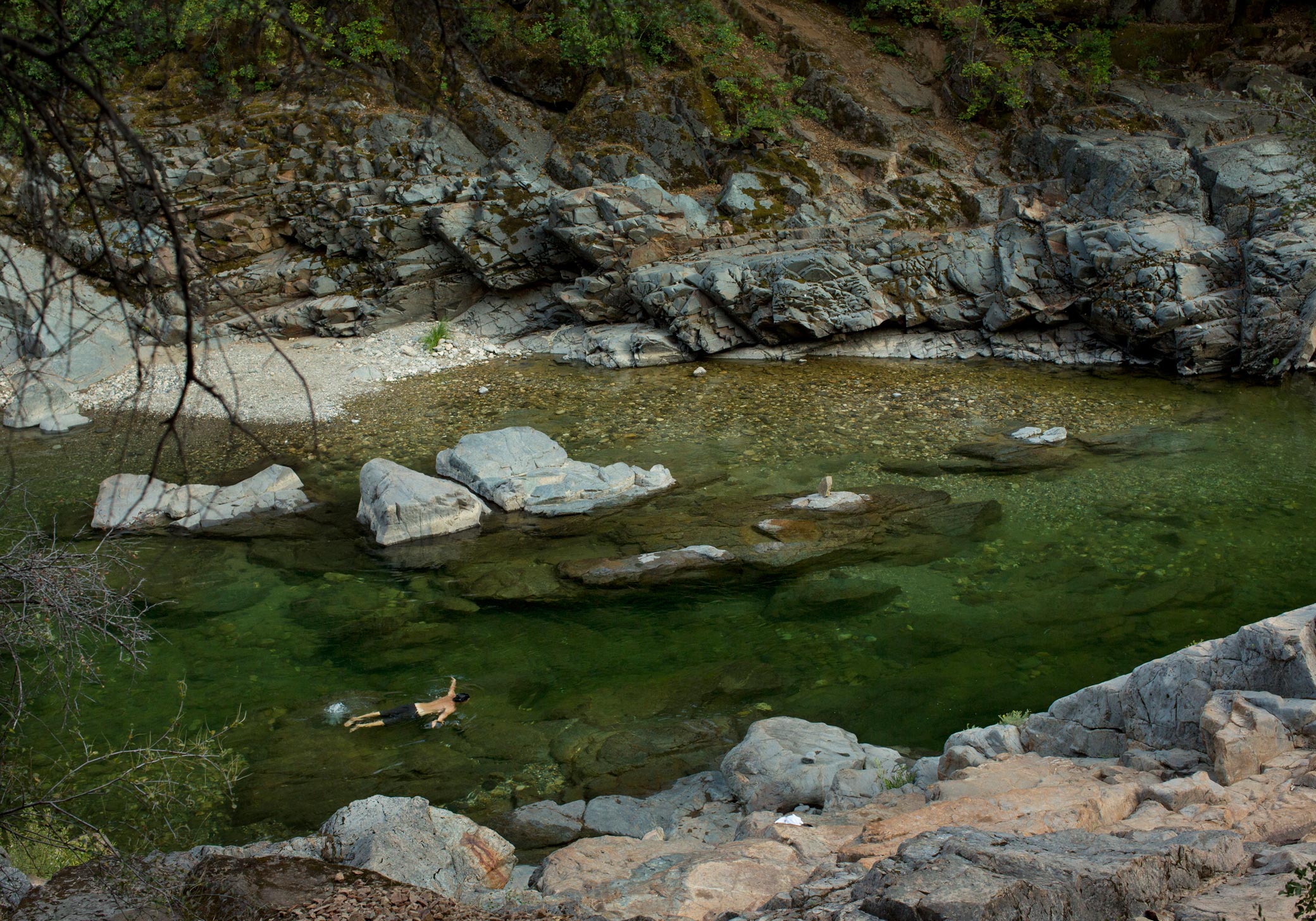
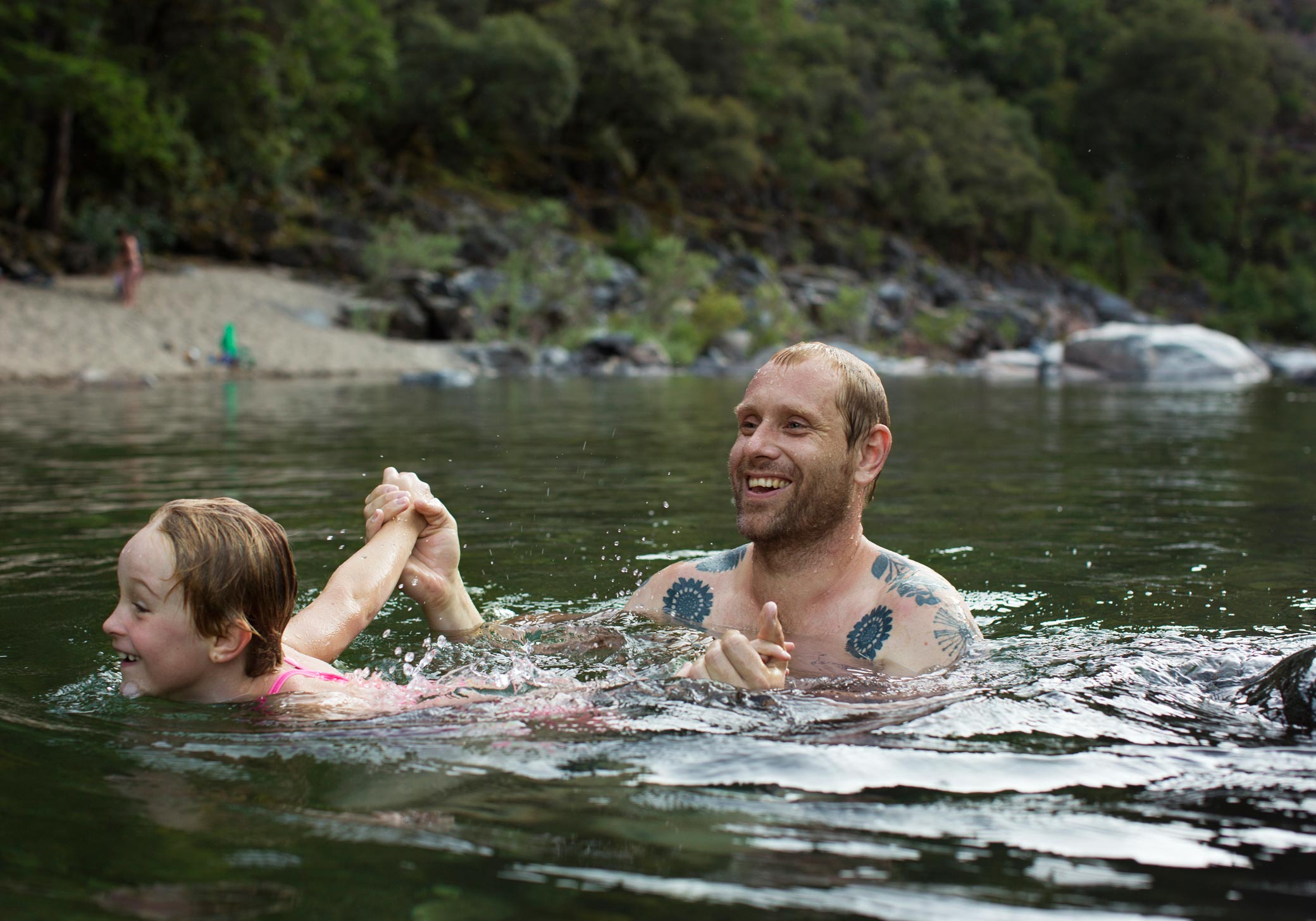
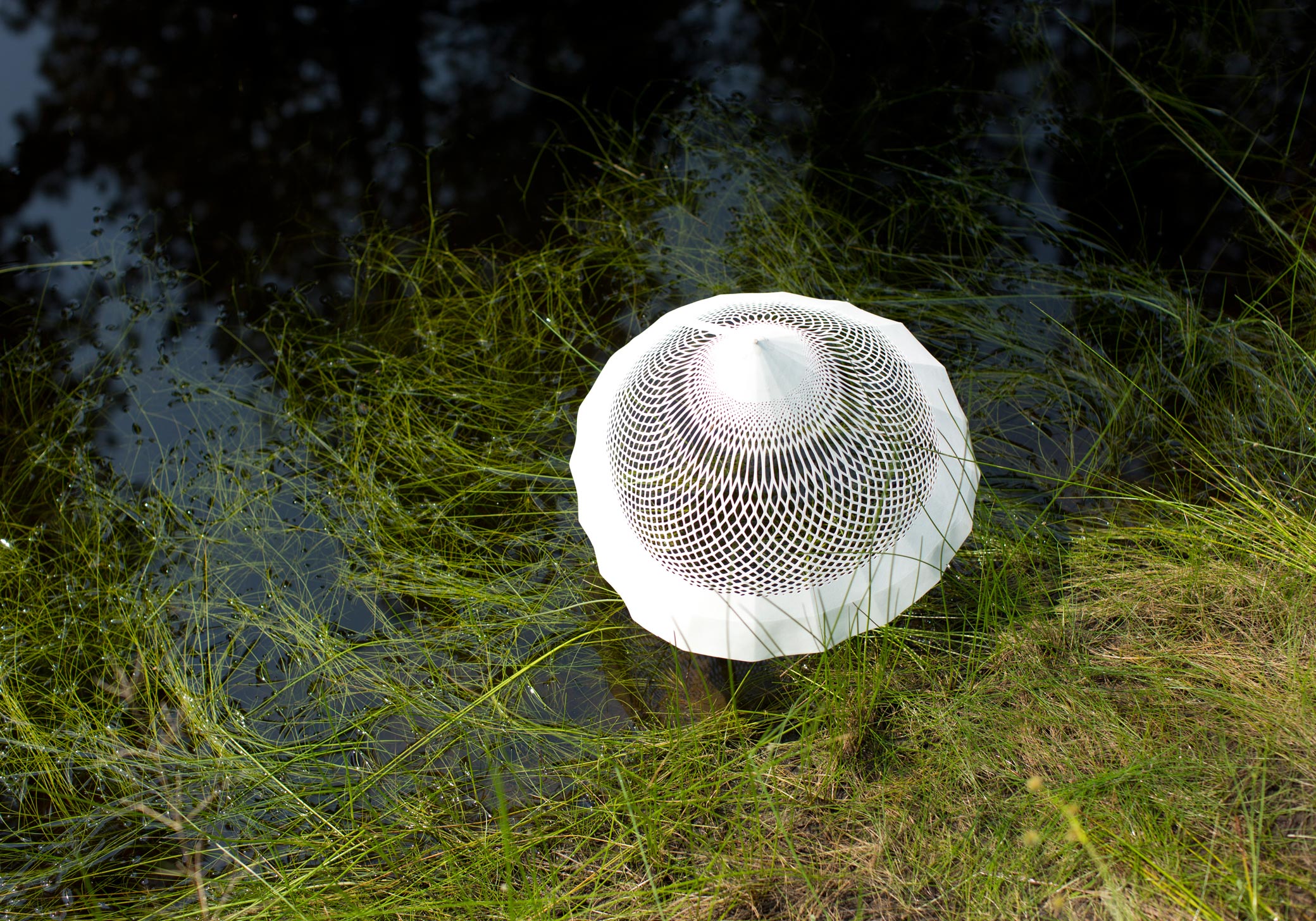
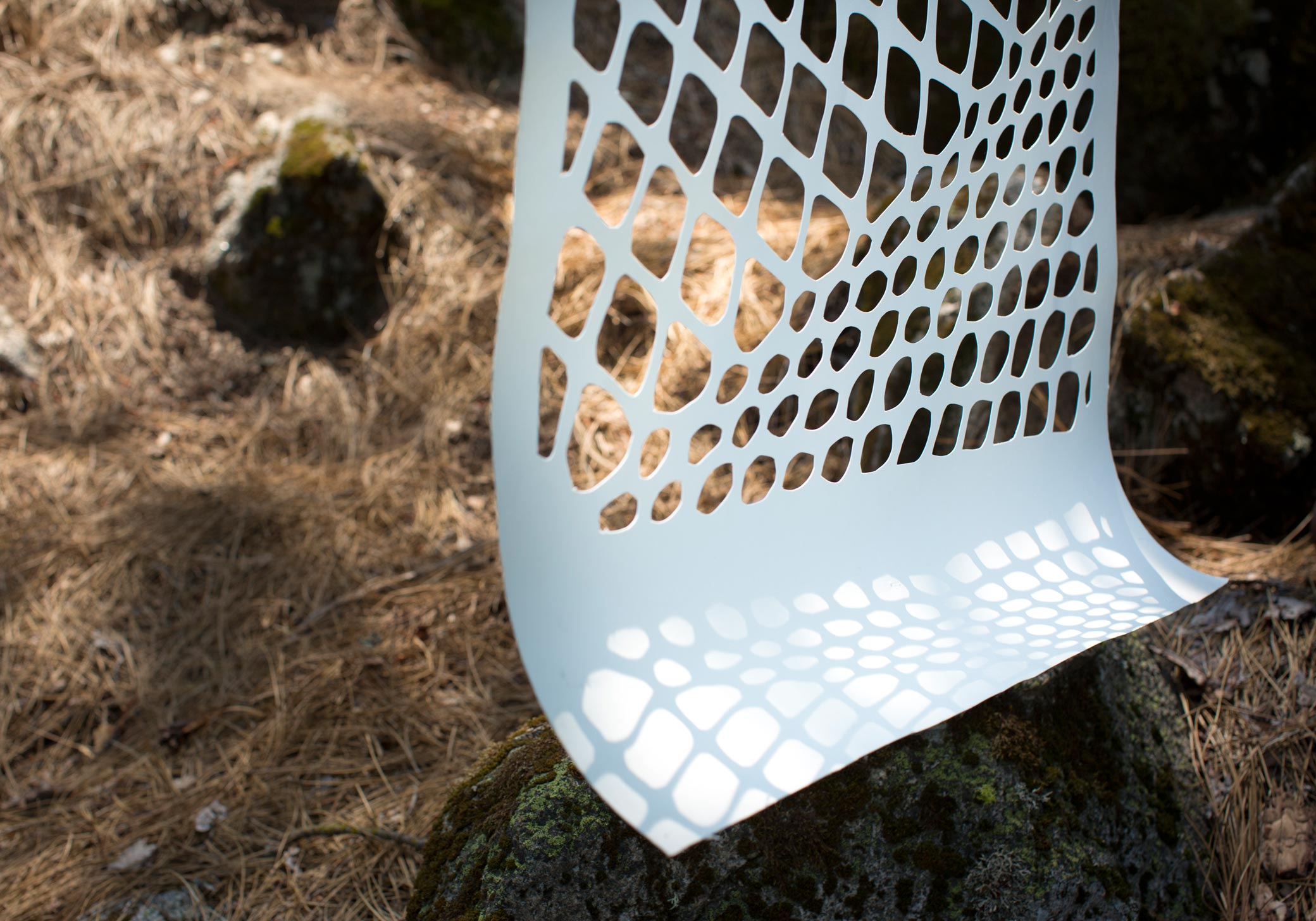
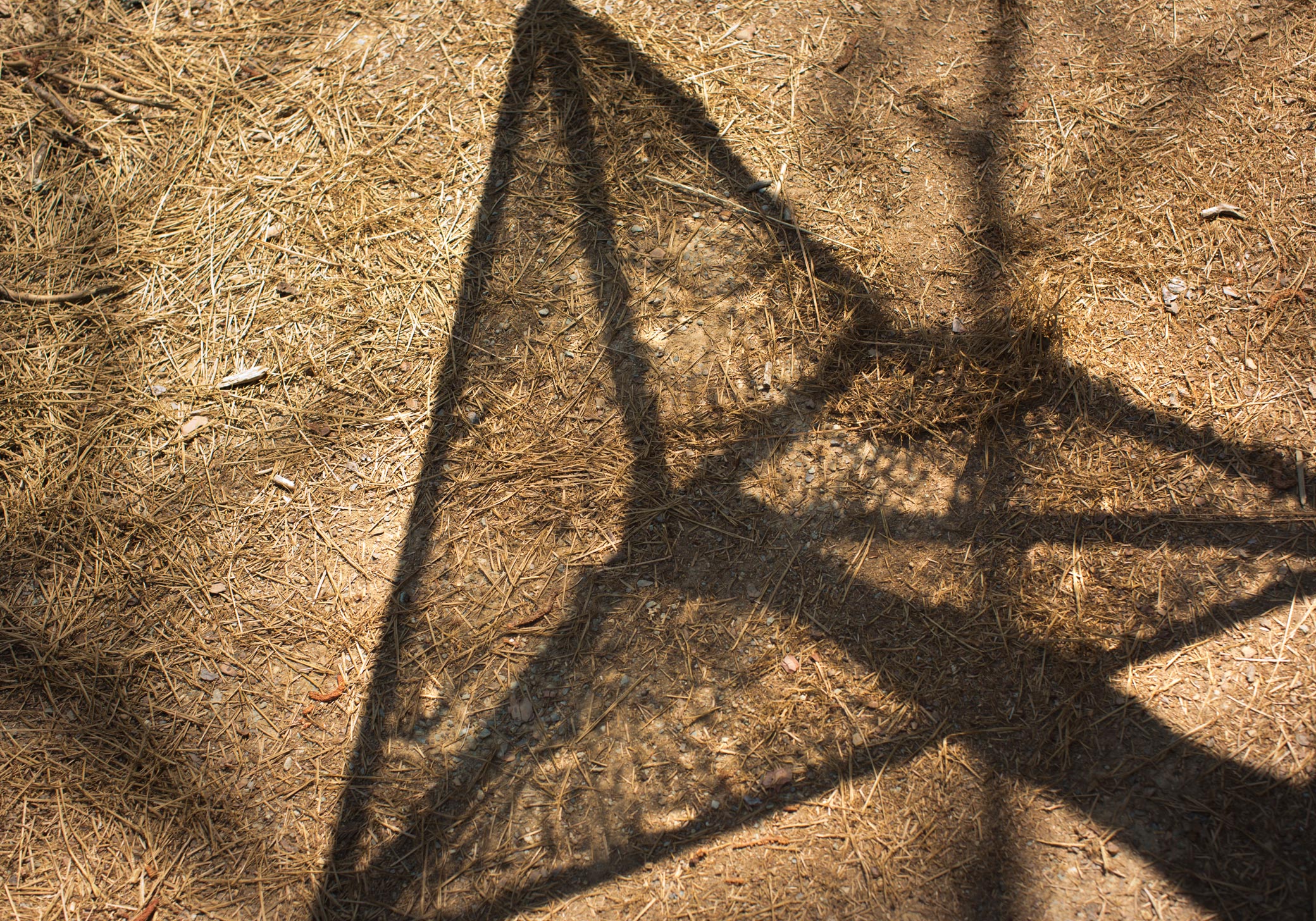
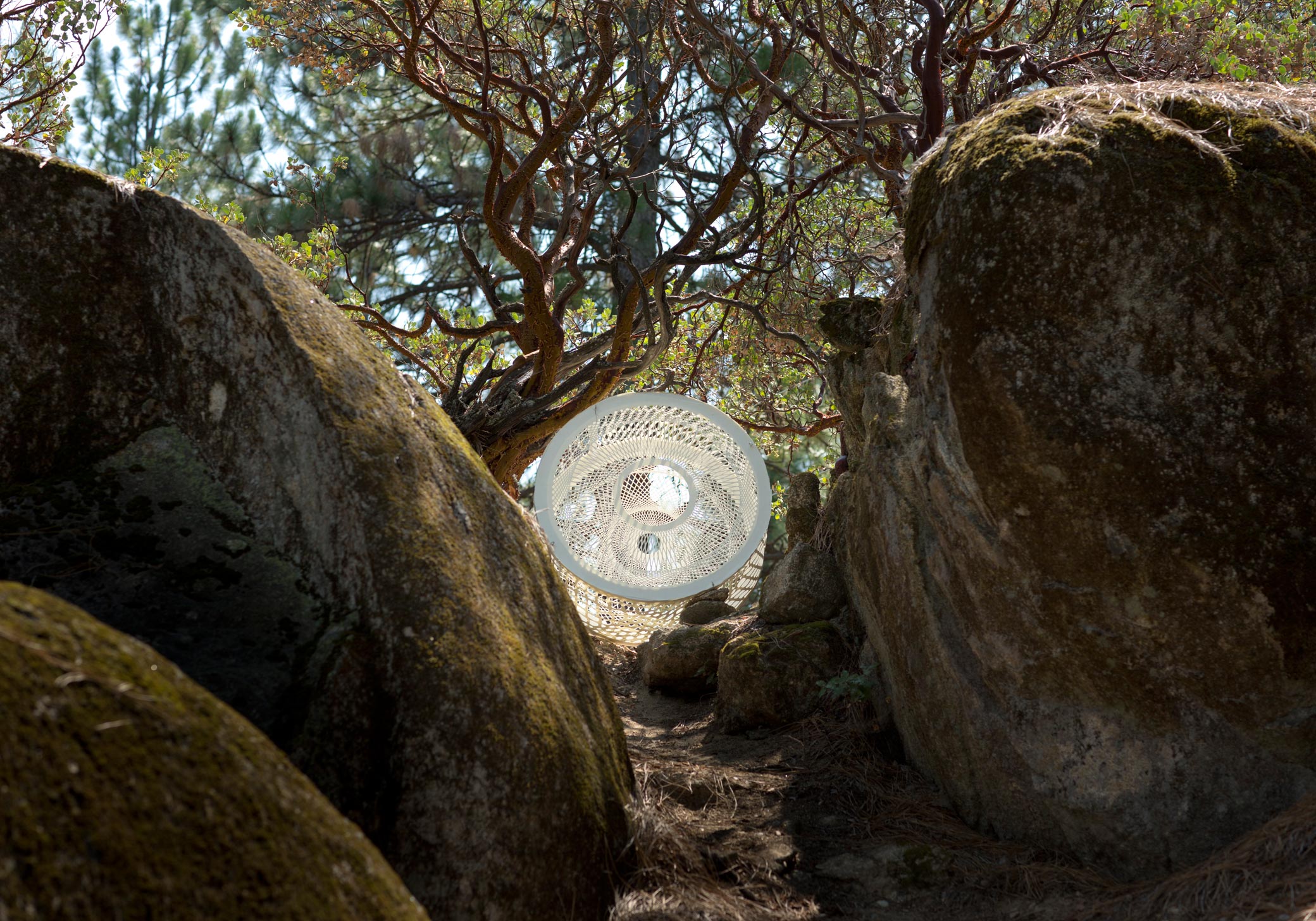
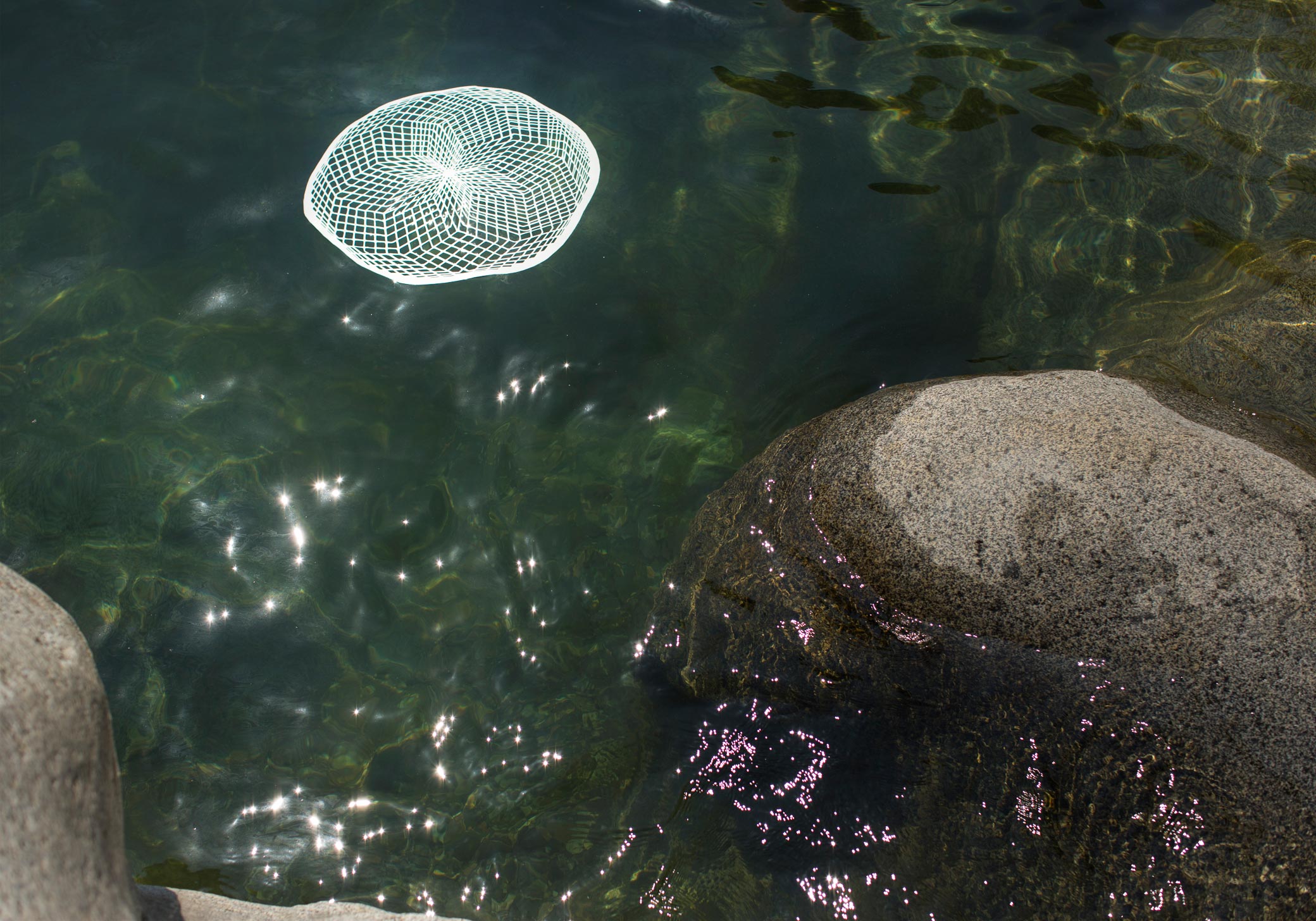
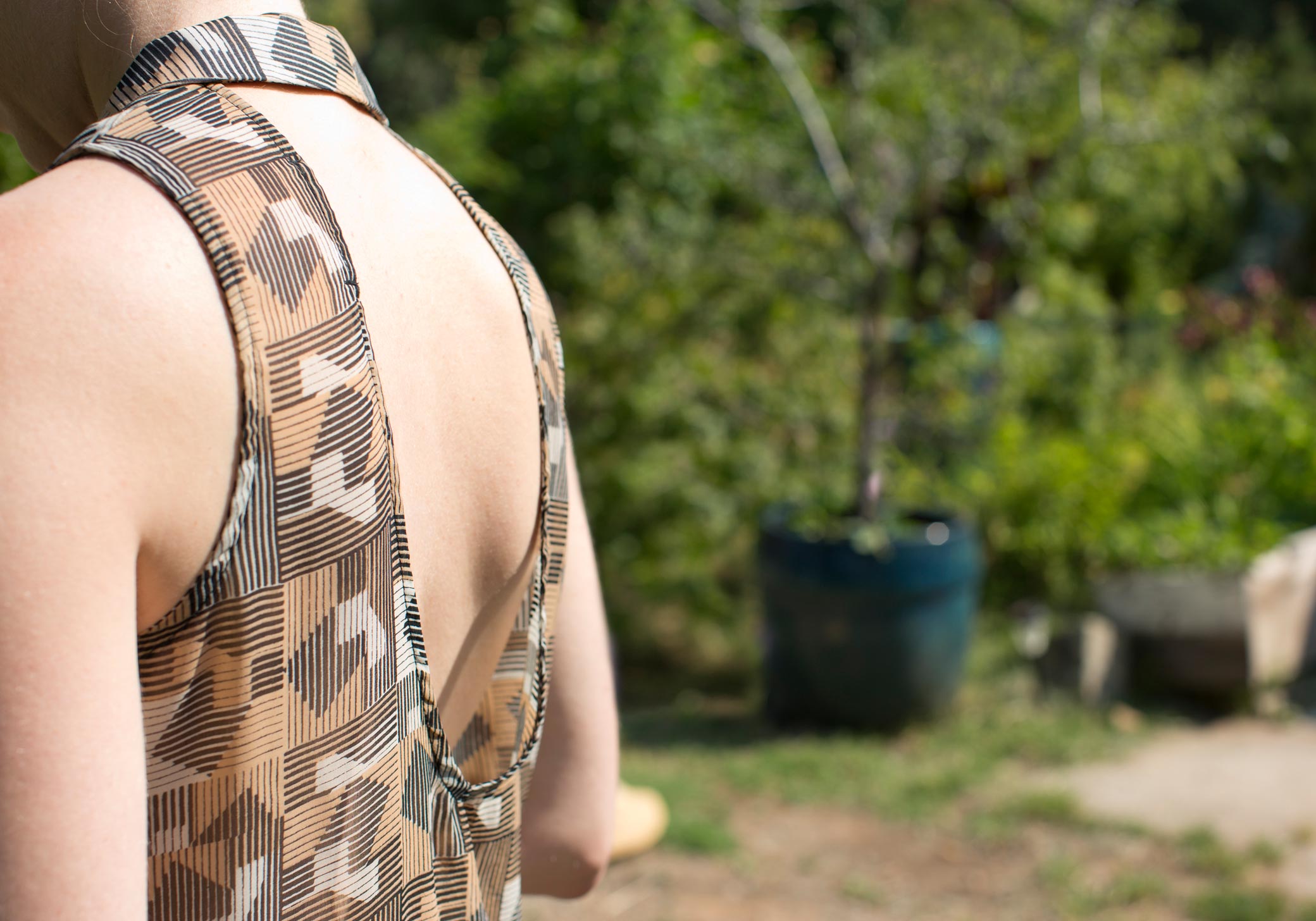
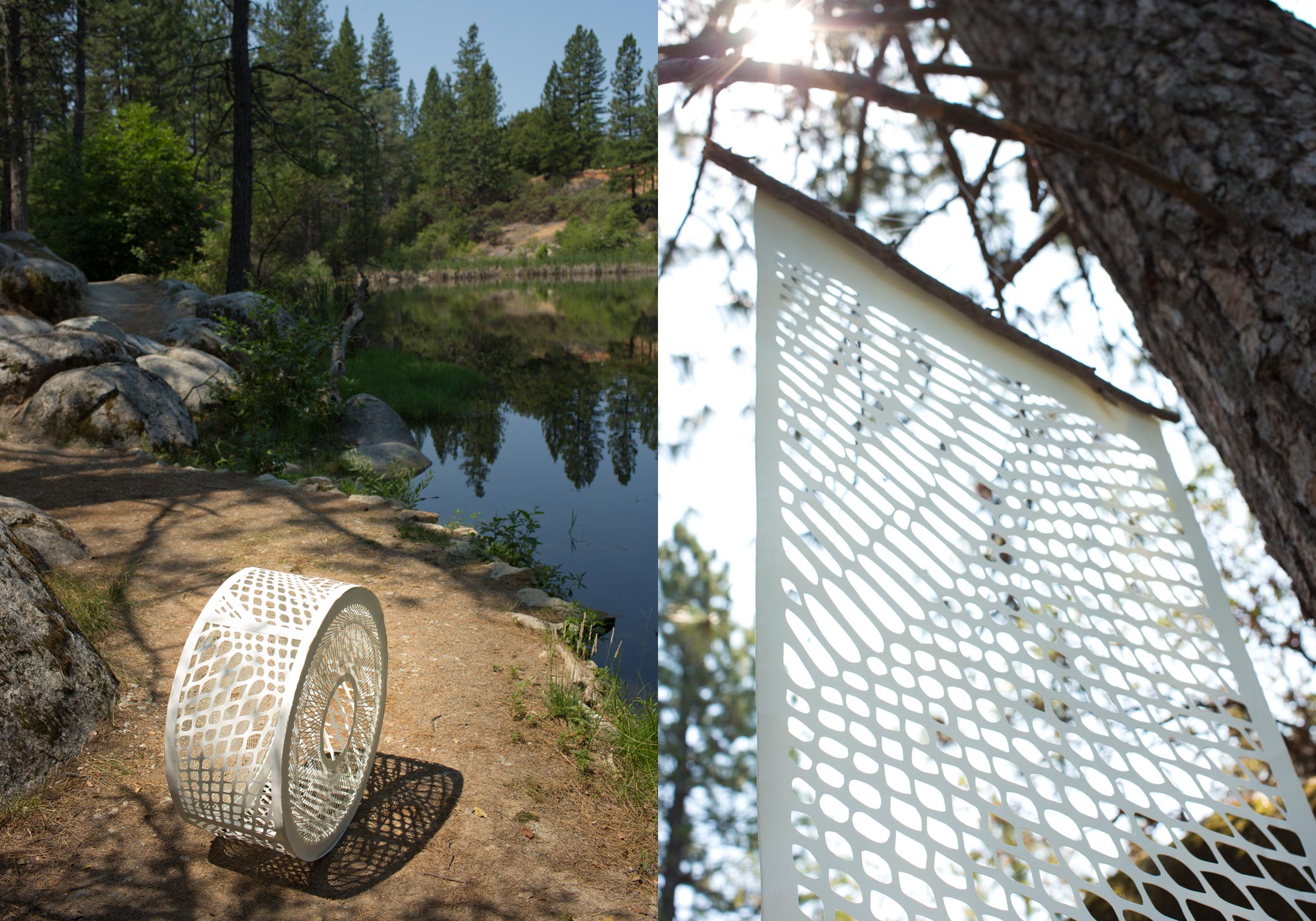
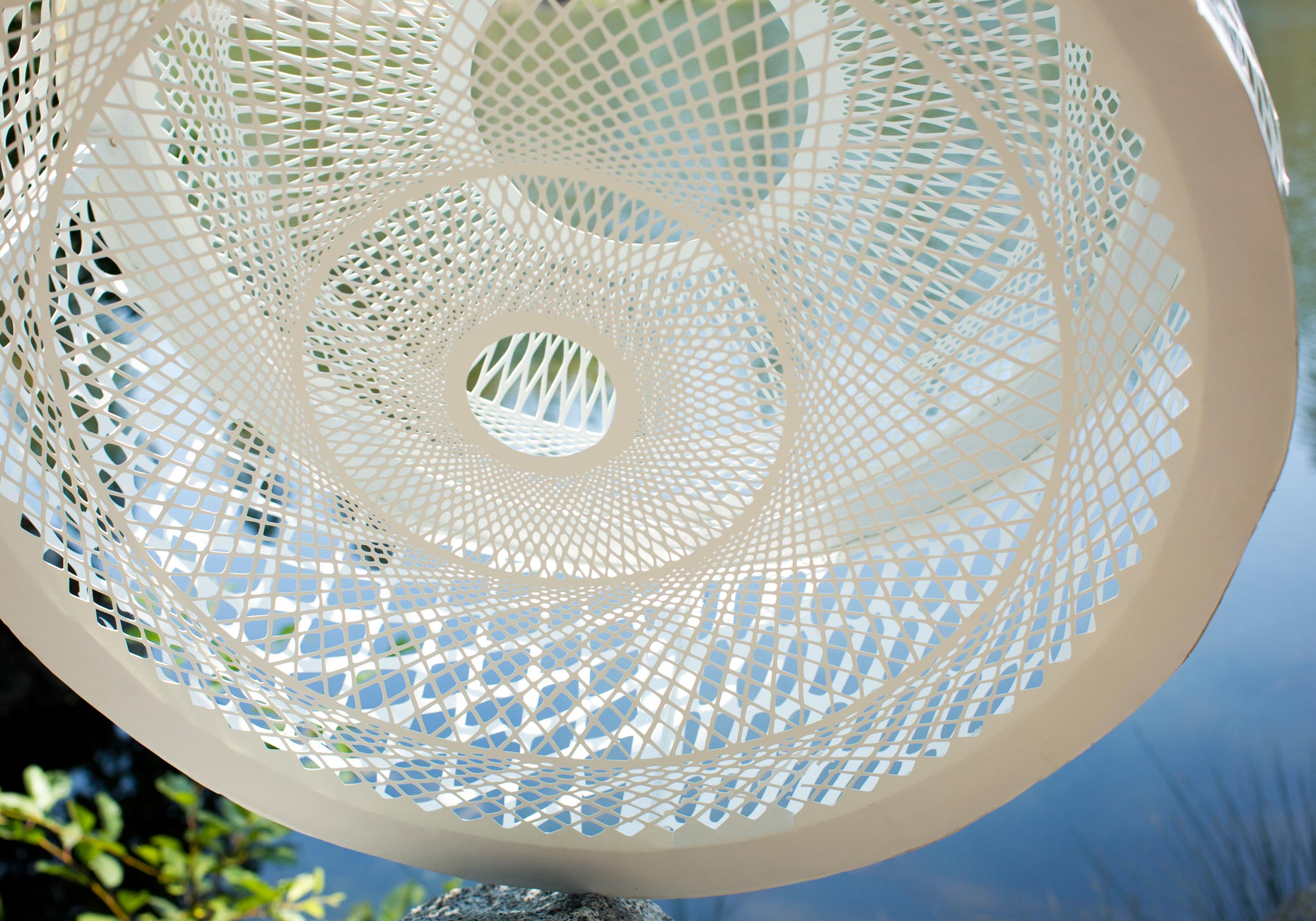
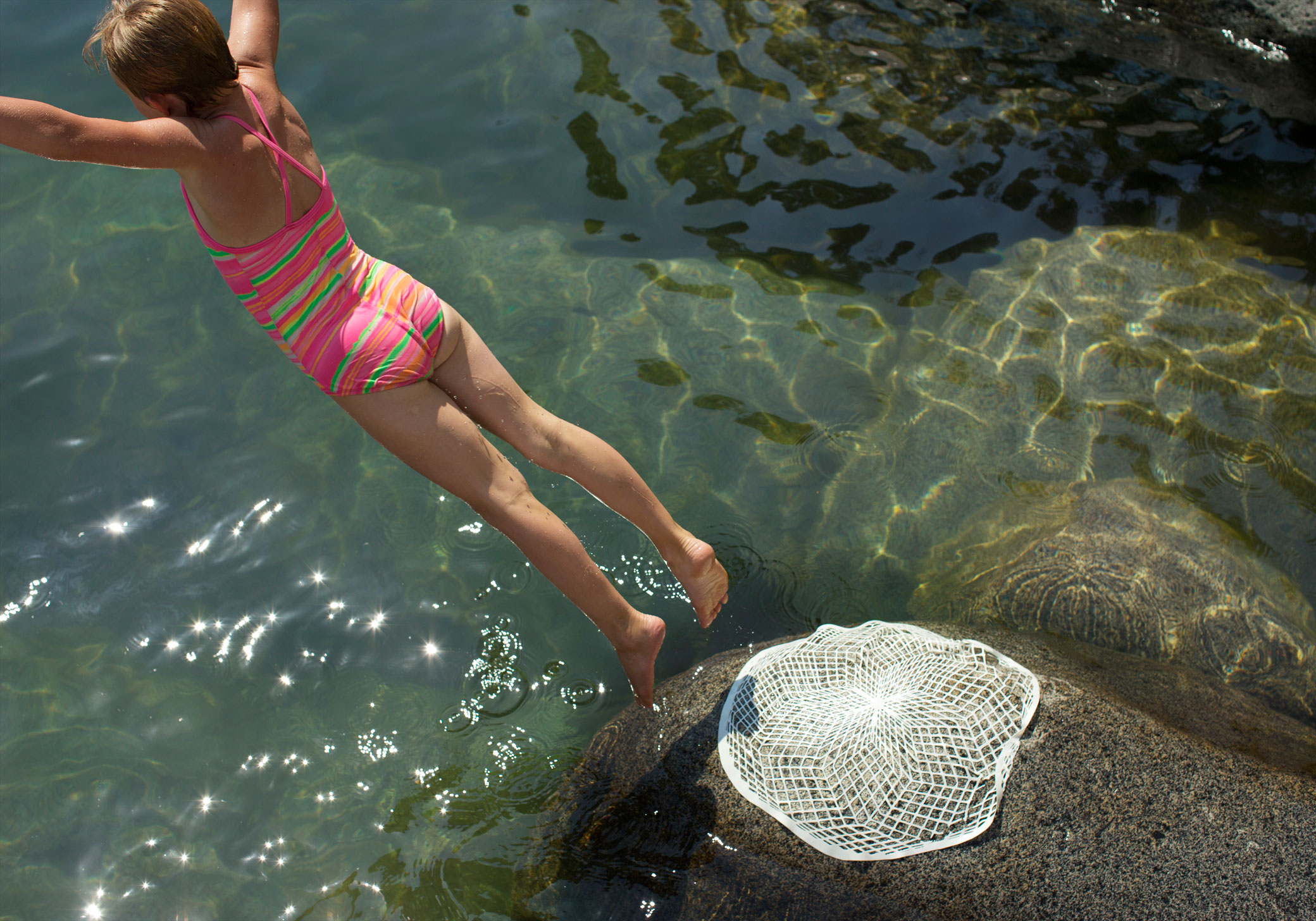
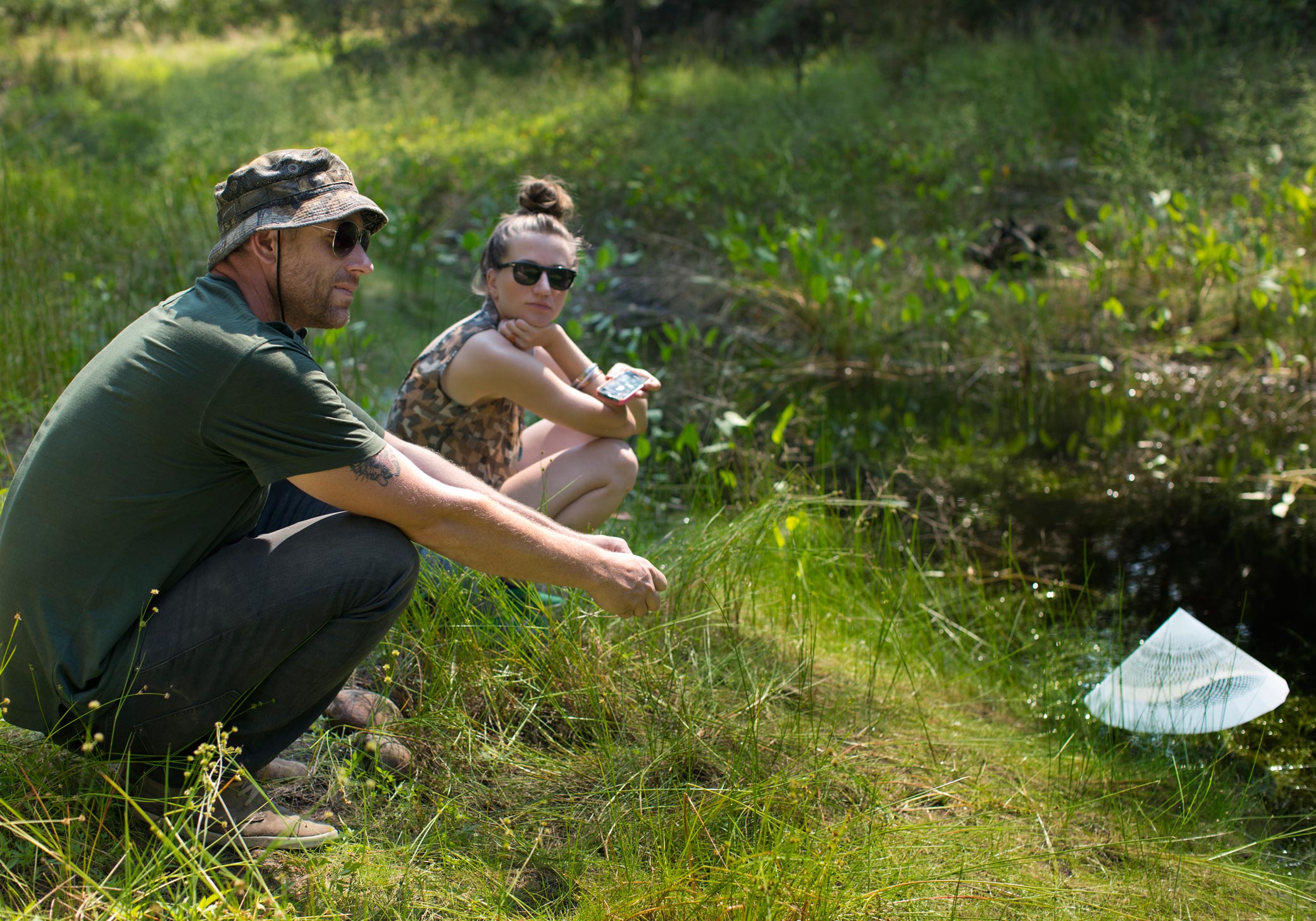
Field-Work: fine art in the field
Curator Aimee Friberg talks with Tahiti Pehrson
Nevada City, CA
Tahiti Pehrson, a visual artist based in Nevada City, creates two and three-dimensional hand-cut tapestries on pristine white cotton rag paper. These intricately cut works are visual explorations into complex systemic patterns, from architectural forms to recurring motifs in the natural world. Tahiti has been cutting paper for over 15 years. Tiny Atlas founder, Emily Nathan and curator Aimee Friberg met up with Tahiti at his home in Nevada City and trekked up with him into some nearby trails, bringing along several of Tahiti’s cut-out sculptures to explore how Tahiti’s work is connected to the landscape he works in.
Aimee: Tahiti, does being out in this environment inform your work or bring up new thoughts for you?
Tahiti: I think it’s good to change it up. When you do an installation in a gallery its just an empty room; this is a chance to be less formal and see the forms in nature and to see how the forms relate to nature.
You said earlier that bringing the work into nature shifts how you view the patterns?
Yes, in nature (my work) resembles nature more to me, and in a stark gallery environment the work resembles geometry more.
Out here the work reminds me of the underlying structures of the natural world, like subatomic particles and matter.
The patterns speak to the unity of all things and to spatial organization. Like the way these plants are here, they are organized by the way they receive light. it’s metaphoric to a larger ecosystem, each thing informs the next--cellular and synchronous. Each of these [cuts in the pattern] is in succession, the smaller ones building toward the center, and reinforcing the structure on the outside, the same way this layer of plants meets this bank. These plants grow here, others grow further back, and so they’re balanced in how they receive light.
Emily: When you are creating patterns are you sourcing them from nature, from photographs or from your mind?
I often use a system of ancient architectural patterns called guilloche in my work. Guilloche patterns date back to Greek and Roman times. Guilloche was mechanized in France in the 1700’s with the creation of the Rose Engine Lathe. Guilloche was commonly used in engraving to make things look jeweled as well as to stave off counterfeiting on currency throughout the world. So I start with guilloche and draw over that by hand or use line variance to create secondary patterns with a more organic feeling.
I got interested in the patterns through money. I’ve always done money, because of everyone’s love and hate relationship with it. I was into that pop sensibility when I was younger. So I discovered guilloche patterns by researching money from all over the world.
Aimee: By doing money you mean cutting out money?
Cutting money. Cutting out patterns in money. It’s also a pattern thing. I started wanting more and more detail. I found the guilloche patterns interesting as a motif of universality in currency. Almost every currency has this type of engraved pattern in common.
Emily: Why are you interested in things that people have in common, as a theme about universals in your work?
I think that every person is doomed to seek a truth. Even if there’s no truth in human terms to be had, we all seek to trace things to an elemental simplicity.
Aimee: Those are some heavy questions to address, you’re getting to the heart of some core issues.
I think my earlier work was about my personal experience. What I was doing seemed truthful and relevant and then I realized it was super personal and not really understood by other people. When you’re younger you don’t really care if people understand your work or not. Having a child changed everything for me. I became more self-reflective and less selfish. I started to have a vested interest in how the world turns out. When you’re young you can be nihilist…
Why do you find yourself back in Nevada City, after being raised here and then spending a decade in SF, why are you here now?
I wanted my daughter to have some of the same experiences and connection to nature that I had growing up here. This place is a lot about community, art and music too. She get’s to grow up with some inspiring people that live here or come through. Of course there’s a bit of nostalgia too. Just being in this spot here, we have a little seasonal creek on our property and that’s the first independence I remember. I could walk really far on the creek where I grew up. And you knew you couldn’t get lost if you followed the creek uphill. It’s the first time I could venture on my own. There was this amazing feeling of being yourself in nature, you feel wild as you become part of nature. I like being close to that feeling. But there are so many amazing places. And these things are not exclusive to this place. But Nevada City is close to San Francisco and I can be there a lot. And then I’m here in nature, and its more mellow and conducive to my practice and basically I like to work all the time.
See more of Tahiti Pehrson’s work at TahitiPehrson.com.

